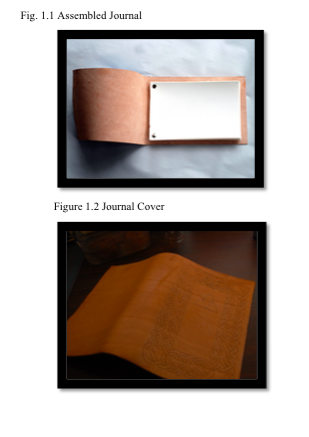About This Project
My research will examine the effect art therapy has on older men coping with later-stage prostate cancer who are experiencing significant levels of anxiety. Specifically, does a single 1- hour art therapy group session significantly lower anxiety in men with prostate cancer?Ask the Scientists
Join The DiscussionWhat is the context of this research?
Art therapy is a form of psychotherapy that uses the expressive qualities of visual mark making within the context of a therapeutic relationship to effect personal change with the aim of increasing well being and psychological functioning. (Wood, Molassiotis, & Payne, 2011, p. 135). My hypothesis and research support the idea that making art relieves mental and emotional symptoms associated with cancer.
Cancer intrudes on an individual’s life in many ways, including social/romantic relationships, employment, body image, and sense of self (Wood et al., 2011). Experiencing the mental strain of a cancer diagnosis, along with the relentless physical fight against the disease, can be daunting. Art therapy can provide relief within an older adult patient’s difficult reality.
What is the significance of this project?
Lowering anxiety may help patients with decision-making concerning treatment options and their overall ability to cope with the diagnosis (Dale, et. al., 2009). Showing that art therapy lowers anxiety in these men can give this complimentary therapy a clear purpose in clinics, hospitals, and support centers.
Currently available data addressing the role of art therapy in cancer management tends to have more female than male participants. While there may be some psychological resistance from men to participate in self-help groups, participants “have reported benefits which include experiences of being accepted and affirmed; reconstruction of a positive identity; sense of affiliation and community; personal transformation; and opportunities for advocacy and empowerment” (Moynihan,2007, p.23).
What are the goals of the project?
Participants will receive group art therapy sessions, free of charge. The experience will, hopefully, provide a way of processing their illness that they were not previously familiar with. Ideally, the exposure to art therapy will encourage participants to continue using the technique as a tool for coping. If the hypothesis is correct, and anxiety is lowered, this study will support efforts to incorporate art therapy into medical settings.
Each participant in the art therapy group will create a personalized leather journal using materials and leather stamping tools provided. This project will be introduced as a tool for coping with anxiety related to treatment. They will create a cover that symbolizes a safe space to process their treatment options and experiences related to diagnosis.
Budget
While I am confident in this project, additional funding is necessary. My clients and colleagues have given great feedback that has inspired me to pursue my commitment to this opportunity. That being said, I am actively looking for financial assistance and am willing to back it up with hard work.
As an art therapy graduate student at The School of the Art Institute of Chicago (SAIC), I participate in the work study program, and work 20 hours per week at my internship, free of charge. This makes getting an additional job to support this research opportunity impossible. Without financial support from my family, I rely on student loans and scholarships. I believe this is a flourishing field, but, so far, underutilized and underappreciated. The more opportunities we are given to show the value of integrating art and health care, the more support we'll gain. And, more importantly, the more people we'll help.
Meet the Team
Team Bio
My interest in arts and health began in 2012 when I studied clinical psychology at theDanish Institute for Study Abroad. I witnessed therapeutic approaches practiced in various Danish healthcare institutions; I was struck by their innovative integration of art into the therapeutic process. While in Denmark, I visited a Danish cancer support center. There, I was introduced to an art therapist who explained her experiences working with those afflicted with cancer. While at the time I knew art therapy was my calling, it was during this discussion that I knew assisting individuals coping with cancer was my specific purpose.My current internship at University of Chicago's SOCARE clinic combines two of my focuses: integrating arts in healthcare, and working with individuals coping with cancer. With support from my supervisor, Dr. William Dale, this research for my thesis will contribute to our wealth of studies proving the efficacy and need for art therapy interventions in health care.
Anna Celander
When I was little, and people asked what I wanted to be when I grew up, I would always say, “An artist, a teacher and a mom.” As I’ve gotten older, my goals for myself have changed somewhat, but the sentiment behind that original response has remained. I’ve always been creative and nurturing. And, as I’ve gotten older, I’ve determined that those are attributes I want in a career. So, what do I want to be when I grow up? An art therapist.
My experiences, so far, have provided insight into what a future in this field means for me. I have been able to observe practicing therapists and have gained first-hand experience. I have also realized that this career path offers a sense of purpose and fulfillment—something I have always wanted for my professional future.
Lab Notes
Nothing posted yet.
Additional Information


Project Backers
- 31Backers
- 121%Funded
- $911Total Donations
- $29.39Average Donation
